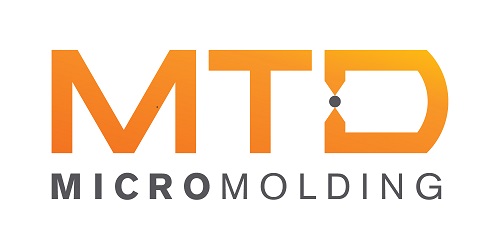Medical Micro Molding Required for Asthma Device
Delays in validation, achieving multi-cavity capability, product launch issues: These are the types of challenges that can cause a potentially successful high precision micro medical molding project to fail. For one medical technology firm, all of these difficulties came into play on a recent project. The reason? The company initially worked with competing medical device partners that turned out to offer more promises than solutions.
Although the part geometry was fairly basic, the tolerances required on the dimensions were small. Our competitor proposed a multi-cavity mold option to provide an attractive piece part price for production. Since the quoted lead time of MTD’s proposal was slightly longer and the mold costs were similar, the customer chose our competitor in the hope of achieving a lower production component cost.
The customer needed to have complete validation and pre-production runs done in time to ship the devices to their facility in Ireland. However, our competitor ran into delay after delay. Once the project fell several weeks behind, the customer initiated a second mold with MTD as a backup plan. We completed the mold and delivered samples for evaluation but were then told not to validate the mold because our competitor was making great progress.
Our competitor continued trying to validate the multi-cavity mold. But after a year of struggling, they still could not achieve a successful validation. With the deadline only six weeks away, the customer came back to MTD, hoping we could get their project on track.
Quality work trumped budget pricing. MTD isn’t the least expensive option around, and some companies in our field opt for a lower price over a higher guarantee of success. But as this customer found, project delays can significantly whittle down those cost savings. Also, failing to make the product as specified can postpone or even cancel a market launch, meaning all the manufacturing costs could be squandered.
At MTD, a project may take longer than at a competitor and may carry a higher price tag. However, we’ll do the job right, hit deadlines as planned and back up our work with the required documentation.
Lower cavitation improved predictability and quality. Many MTD competitors push for high cavitation as a way to increase quantity and keep production costs attractive. For the medical technology firm, this approach only led to more challenges when the tolerances wouldn’t hold.
MTD usually recommends customers start with a one-cavity tool to boost the likelihood of success and prove capability. We create all molds out of hardened steel, then follow a scientific molding development process to sample the molds.
Before beginning validation, we create a robust process window and develop a measurement system to evaluate the dimensional capability of the parts. Strictly adhering to such a plan results in an overall faster validation with a very high success rate.
A team-based approach made for a stronger, more efficient process. Some MTD competitors assign the customer to one project manager, who shepherds the product through the process. That one-person approach can be inefficient and susceptible to errors.
In contrast, MTD sees every project as a team effort. Having multiple levels of expertise come into play makes the process more successful. For the medical technology firm, it was our team-based approach that enabled validation from scratch in less than a month.
“This was a full internal team effort involving engineering, operations, molding and quality control to get the customer what they needed,” said MTD project manager Lindsay Mann.
Especially with medical technology, products have a short lifecycle due to continuous innovation. Miss a launch window and a product could get shelved permanently, representing wasted time and development. Delays can also push on schedules in marketing and sales, negatively impact company reputation and cost a company millions of dollars.
Thanks to MTD, our customer was able to stick to their original timeline. Although the challenges might have seemed insurmountable when the project first got mired in delays by the competitor, we cleared up the headaches and made a successful product launch possible.
“Thanks again for the quick turnaround of this part. You definitely blew away the competition.”
– R&D Engineer at medical technology firm
“We understand the importance of speed to market, especially for medical components. Our customers depend on us for the deliverables they require to complete their testing and prepare for their product launch on time.”
– Lindsay Mann, Project Manager, MTD Micro Molding
